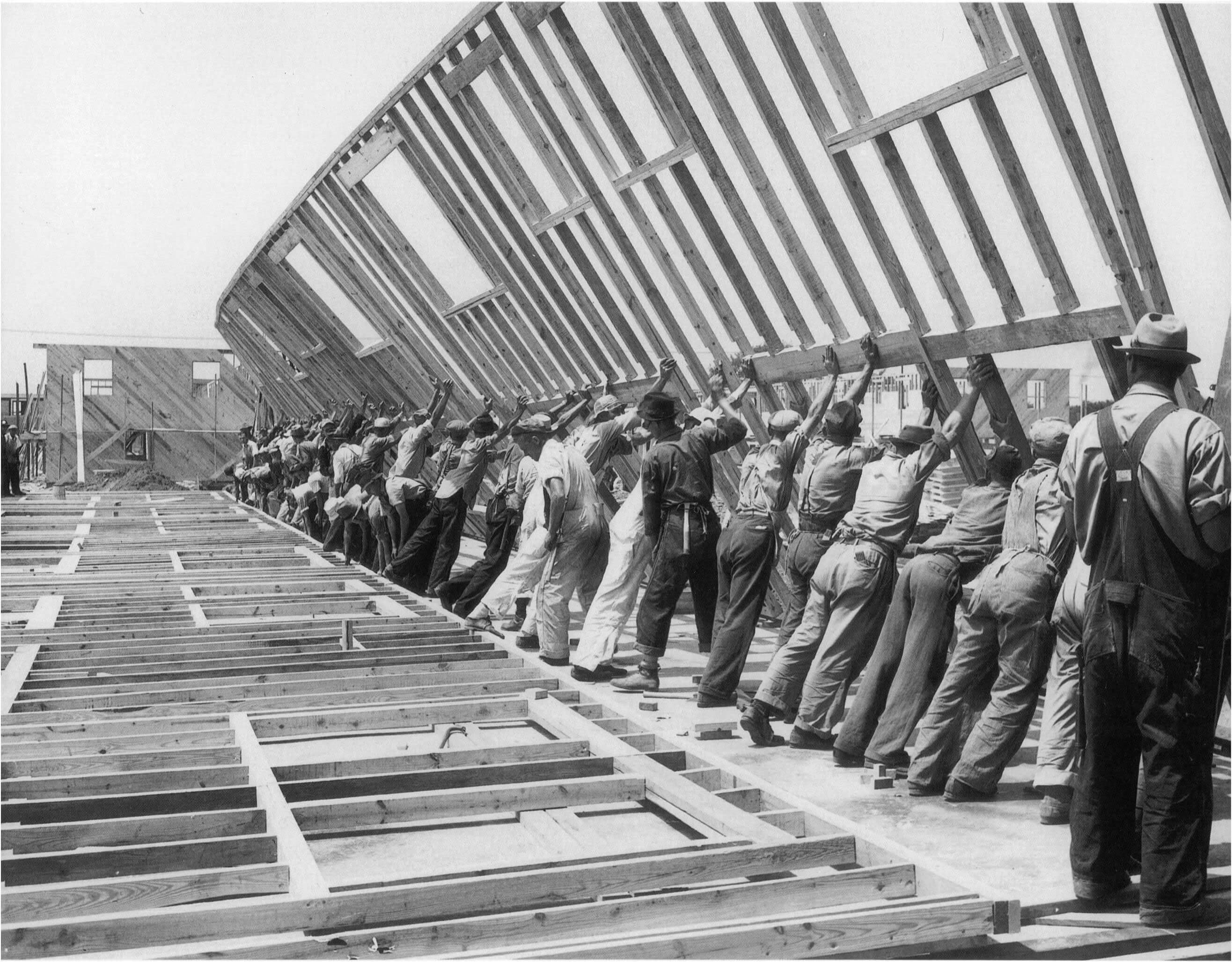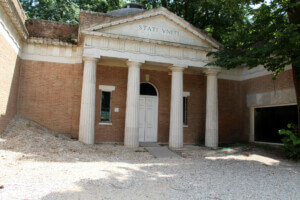Like blue jeans and roadside buildings shaped like ducks, wood-framed construction is a singularly American invention—accessible, improvisational, and, yes, rooted in expansionism. But the centuries-long ubiquity of wood framing in the United States has also led to a cultural blotting-out or blind spot, a softwood amnesia of sorts. It’s an architecture so ordinary that it’s often overlooked, forgotten, dismissed.
“Its commonness and regularity exude a particular cultural effect that’s uniquely American,” said Paul Preissner, commissioner and co-curator of American Framing, an exhibition exploring the “conditions and consequences” of wood-framed construction at the 17th International Architecture Exhibition of La Biennale di Venezia. “It’s something that people can do on their own even if they have no experience and don’t come from construction backgrounds. The ease of access to architecture also evaporates any of the mystery to it, or specialness, and therefore makes it seem outside of the world of discourse, in a sense.”

American Framing, on view at the United States Pavilion beginning May 22 at the twice-postponed Venice Architecture Biennale, puts cheap, flimsy stick building at the center of that discourse, which skews, thematically, toward the weighty and substantial. The exhibition elevates humble, homegrown architectural ingenuity through newly commissioned photography by Daniel Shea and Chris Strong, site-responsive furniture designed by Ania Jaworska and Carrie Norman and Thomas Kelley of Norman Kelley, and scale models presented by students from the University of Illinois at Chicago (UIC), where Preissner and exhibition co-curator Paul Andersen are both professors in the School of Architecture. Jaworska and Kelley are also professors at UIC.
Biennale visitors will be left with little doubt as to the theme of the U.S. Pavilion even before they step inside the Solomon R. Guggenheim Foundation–owned 1930 Palladian building at the Giardini della Biennale. For American Framing, Preissner and Andersen, who lead private architectural practices in Chicago and Denver, respectively, in addition to teaching at UIC, have designed a monumental installation that completes the front facade of the neoclassical pavilion. In true American form, the pavilion advertises exactly what can be found inside.
“Everybody will enter through a four-story wood-framed structure that creates a new facade across the front [of the pavilion],” explained Andersen about the houselike structure, which will remain unclad to showcase the timber skeleton. “You can go up to the second or third floor and look back out over the Giardini or down into the courtyard.”

Populating the full-scale, open-air structure will be domestic furnishings like benches and rocking chairs, designed by Norman Kelley to “give it a scale and an occupation, whether it’s the porch or the second floor,” said Preissner, who noted that it’s unclear whether visitors will be allowed to sit on or touch the installation furniture, owing to COVID-19 restrictions. (Jaworska’s furniture, also built from dimensional lumber and designed in collaboration with UIC students, will be installed in the pavilion’s courtyard.)
The pandemic has also prompted some slight circulatory tweaks to the pavilion, although it didn’t require major changes in the exhibition itself. “We just have to identify which set of doors are the entrance—and then there’s a one-way path through the four galleries and the rotunda—and then one as the exit,” explained Preissner, adding that American Framing’s student-researched and -designed building models representing historic projects, typological projects, and “weird experimental novelties” were in a sequence to begin with. “We had already been leaning toward a directional nature for the exhibition, so it didn’t present any challenges when we were told we have one way in and one way out,” he said.
Pandemic-related adjustments aside, the key participation of UIC students is one element that sets American Framing apart from exhibitions staged at the U.S. Pavilion during recent editions of the Venice Architecture Biennale.
While the 2000 exhibition ARCHitecture LABoratories was a collaborative effort between Columbia University and the University of California, Los Angeles (UCLA), subsequent exhibitions have lacked intimate student involvement, according to the American Framing curators. (Coincidentally, frequent collaborators Preissner and Andersen were members of the student teams for Columbia and UCLA, respectively, although their paths did not cross directly until later.)
If there was student participation, research-based or otherwise, in exhibitions held over the past two decades, Preissner believes, “it was always done in service of the architects presenting their profile.”
By contrast, he said, “our theme was to make it about architecture, not architects.”











